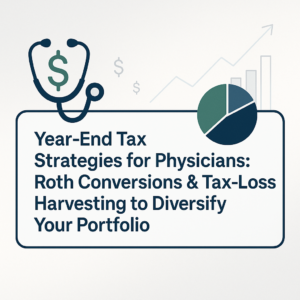Life insurance plays a vital role in ensuring the financial stability of your loved ones in the event of your untimely demise. It can provide peace of mind knowing that those who depend on you will be financially protected.
For young healthcare workers, the stakes are particularly high. You are balancing substantial student loans, career advancements, and personal life changes, all of which impact your financial planning needs.
Understanding Life Insurance Coverage
Life insurance is a contract between you and an insurance company, where the insurer promises to pay a designated beneficiary a sum of money upon your death in exchange for premium payments. There are various types of life insurance policies, each with its characteristics and benefits.
Types of Life Insurance:
Term Life Insurance:
- Provides coverage for a specified term (e.g., 10, 20, 30 years).
- Simplest and most affordable option.
- Payouts occur only if the insured dies within the policy term.
- Pros: Lower premiums, straightforward structure.
- Cons: No cash value, coverage ends after term.
Whole Life Insurance:
- Offers lifelong coverage with a guaranteed death benefit.
- Includes a savings component, known as cash value, which grows over time.
- Pros: Fixed premiums, cash value accumulation.
- Cons: Higher premiums, less flexibility.
Universal Life Insurance:
- Like a whole life policy, but you choose the investments.
- Combines the death benefit with a savings component that earns interest.
- Pros: Additional exposure to investment like returns.
- Cons: More complex, potential fluctuations in cash value.
Variable Life Insurance:
- “Variable” life insurance can be found in whole or universal policies.
- Owners are able to change their premiums, amount of coverage, and other terms of the policy.
- Pros: Ability to lower or increase premium as life changes.
- Cons: More complex management, typically higher fees.
Assessing Your Life Insurance Needs
Determining the right amount of life insurance coverage is crucial. Your needs will vary based on several factors, including your financial obligations, lifestyle, and long-term goals.
Income Replacement:
Calculate the number of years your family will need financial support after your death. Consider future income growth and inflation.
Debt Obligations:
Include any outstanding debts, such as student loans, mortgages, and credit card balances.
Future Expenses:
Plan for major future expenses, such as children’s education, weddings, and spouse’s retirement.
Existing Assets and Savings:
Take into account your current savings, investments, and other liquid assets.
Special Considerations for Healthcare Workers:
- High Student Loan Debt: Healthcare professionals often carry significant student loans.
- Unpredictable Schedule: The demanding nature of the profession may affect health, which impacts premiums.
- Income Volatility: Private practice and different healthcare roles can lead to fluctuating income levels.
Risk Classifications and Premiums
Insurance companies use risk tables to assess the likelihood of a claim, which influences premiums. Understanding this can help you secure better rates.
Health Status:
- Medical history and current health conditions.
- Lifestyle Habits: Smoking, alcohol use, hobbies, etc.
- Occupation: Jobs with higher risks may lead to higher premiums.
The Underwriting Process:
During underwriting, insurers evaluate the risk level of a potential policyholder. This process involves:
- Medical Examination: Detailed health check-up conducted by a licensed professional.
- Questionnaires: Questions about medical history, lifestyle, and family health history.
- Review by Underwriters: Underwriters use the collected data to determine the applicant’s risk classification and premium rates.
Common Factors Affecting Risk Classification:
- Age: Younger policyholders generally pay lower premiums.
- Gender: Women often receive lower premiums due to longer life expectancies.
- Medical Conditions: Chronic health issues and family history of diseases can increase premiums.
- Lifestyle Choices: High-risk hobbies and habits can lead to higher rates.
Impact of Lifestyle Changes:
- Exercise and Diet: Maintaining a healthy lifestyle can lead to lower premiums over time.
- Quitting Smoking: Non-smokers benefit from significantly lower rates than smokers.
- Regular Health Check-ups: Proactively managing health can positively impact risk classification.
Strategies to Optimize Your Life Insurance Policy
Optimizing your life insurance involves regular review and reassessment to ensure it continues to meet your needs.
- Schedule Annual Reviews: Regularly evaluate your coverage to ensure it aligns with any changes in your circumstances.
- Consider Life Changes: Update your policy based on significant life events, such as getting married, having children, or career changes.
Advocating for Better Rates:
- Improve Your Health: Adopting a healthier lifestyle can lead to lower premiums.
- Quit Smoking: Non-smokers benefit from significantly lower rates than smokers.
- Shop Around: Compare policies from different insurers to find the best rates.
Avoiding Common Mistakes:
- Underestimating Needs: Ensure comprehensive coverage that fully addresses all financial obligations and future expenses.
- Ignoring Policy Reviews: Regularly reassess your policy to reflect changing circumstances.
- Choosing Inappropriate Policy Types: Select policies that align with your needs and financial situation.
Tips for Young Professionals:
- Start Early: Younger individuals benefit from lower premiums.
- Research Thoroughly: Understand different policy types and terms before committing.
- Consult Professionals: Work with financial advisors or insurance brokers for informed decision-making.
- Reassess Regularly: Make it a habit to reassess your policy every few years or during major life changes.
Conclusion
Optimizing your life insurance is crucial for long-term financial security. Regularly reviewing and adjusting your policy to reflect life changes and financial goals ensures that you and your loved ones are adequately protected. By understanding the types of life insurance, assessing your needs, and implementing strategies for optimization, you can make informed decisions that bolster your financial plan.
Disclaimer
This blog post is designed to provide general information for educational purposes only. It does not constitute financial advice. For personalized advice tailored to your specific circumstances, please consult a qualified financial advisor.






